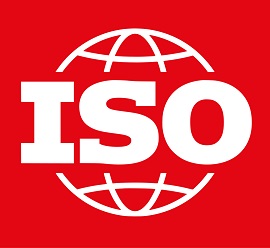
International Organization for Standardization
Overview:
| ISO Established: | 23th February 1947. |
| ISO Headquarters: | Geneva, Switzerland. |
| Members: | 168 members |
| Official Languages: | English, French, and Russian. |
| Organization Type: | Non-governmental organization. |
| ISO Objective: | International standards development. |
What is ISO?
ISO stands for International Organization for Standardization. ISO is an independent, non-governmental international standard development organization composed of 168 members of national standards bodies.
ISO brings experts from member countries together to share knowledge and develop voluntary, consensus-based, market-relevant International Standards that support innovation and solve global challenges.
Establishment of ISO:
ISO was established on 23 February 1947, and it has published about 25,000 international standards covering almost all aspects of technology and manufacturing.
Objectives of ISO:
ISO brings together experts from all over the world to develop International Standards. ISO promote the teaching of standardization, by participating directly in a joint masters program, helping members to set up similar programs and maintaining a database of materials related to standards in education at all levels. ISO also help members through training and acts as a resource for standards-related research.
ISO works to help raise public awareness of standards and standardization. We work with other organizations, such as the IEC and ITU, to create an annual World Standards Day. The day is celebrated by standards organizations around the world and takes a look at how standards address the challenges that face society today.
Headquarters of ISO:
The headquarters of ISO is situated in Geneva, Switzerland.
Members of ISO:
Currently, ISO has 168 members (39 Correspondents and 4 Subscribers) and ISO has three membership categories.
1. Full members: Full members influence ISO standards development and strategy by participating and voting in ISO technical and policy meetings. Full members sell and adopt ISO International Standards nationally.
2. Correspondent members: Correspondent members observe the development of ISO standards and strategy by attending ISO technical and policy meetings as observers. Correspondent members that are national entities sell and adopt ISO International Standards nationally. Correspondent members in the territories that are not national entities sell ISO International Standards within their territory.
3. Subscriber members: Subscriber members keep up to date on ISO’s work but cannot participate in it. They also can not sell or adopt ISO International Standards nationally.
Official Languages:
The official languages of ISO are English, French, and Russian.
Organizational Structure:
General Assembly: Members meet annually at a General Assembly to discuss the strategic objectives of ISO.
The ISO Council: The ISO Council is the core governance body of the organization and reports to the General Assembly. It meets three times a year and is made up of 20 member bodies, the ISO Officers and the Chairs of the Policy Development Committees.
Technical Management Board: The technical management board is responsible for the technical committees that lead standards development.